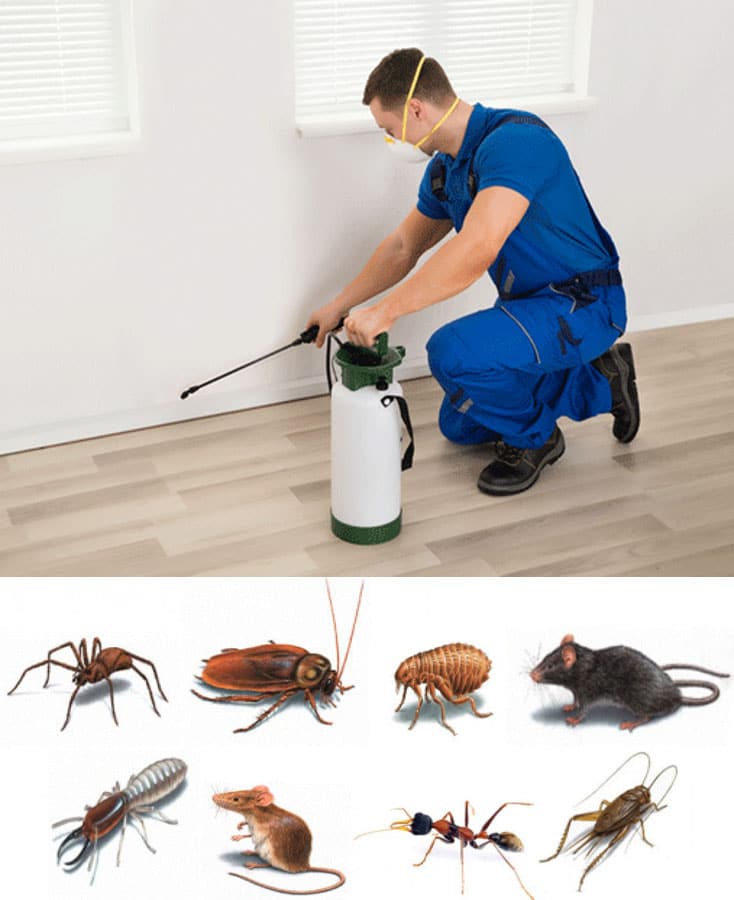Quality A1 Pest Control Services Charlotte - Protect Your Home
Quality A1 Pest Control Services Charlotte - Protect Your Home
Blog Article
Bed Insect Therapy Failure: Comparing Chemical Vs. Non-Chemical Solutions
In the world of bug control, especially when handling the relentless concern of bed insects, the choice between chemical and non-chemical treatment remedies can be an essential one. Both strategies offer distinctive benefits and drawbacks, affecting variables such as effectiveness, safety and security considerations, and overall cost. By checking out the nuanced information of each technique, a more clear understanding of which path to seek in addressing a bed insect problem can be achieved.
Effectiveness of Chemical Therapies
Chemical treatments for bed pest invasions have been commonly acknowledged for their potent and rapid efficacy in eliminating these parasites. When taking into consideration the performance of chemical therapies, it is critical to recognize that they can provide a detailed and quick remedy to a bed pest issue. Professional pest control operators typically depend on pesticides to target bed insects at numerous phases of their life cycle, consisting of eggs, nymphs, and adults. These chemicals typically work by interfering with the bed pests' nerves, bring about paralysis and ultimate fatality.
Furthermore, chemical treatments have the advantage of offering residual impacts, implying that they can remain to remove bed bugs even after the preliminary application. This residual action is particularly useful in combating any kind of possible re-infestations. In addition, the rapid action of chemical treatments can bring relief to people dealing with severe bed insect infestations, enabling them to reclaim control of their home promptly.
Safety And Security Concerns With Chemical Solutions
When using chemical services for bed insect treatment is making sure the security of passengers and the atmosphere,One essential aspect that requires careful consideration. While chemical treatments can be effective in eliminating bed insects, they may present risks if not handled appropriately. Among the primary security interest in chemical solutions is the possible injury they can trigger to human health. Direct exposure to certain chemicals used in bed insect treatments can bring about respiratory concerns, skin inflammation, or other negative reactions, specifically in individuals with pre-existing problems or level of sensitivities. Furthermore, improper application or dosage of chemical pesticides can lead to poisonous deposits lingering in the cured location, posing long-term health threats to residents.
In addition, the environmental influence of chemical remedies is an additional significant factor to consider. Some chemicals used in bed pest treatments might be damaging to beneficial insects, wild animals, and ecosystems if they leach into the dirt or water supply. It is vital to utilize chemical therapies carefully, complying with safety standards, and thinking about much less poisonous options to minimize these dangers and guarantee the risk-free and reliable administration of bed insect problems.
Advantages of Non-Chemical Methods
Thinking about the potential security issues and environmental impact linked with chemical services for bed bug therapy, discovering non-chemical methods presents an appealing option with several distinctive benefits. Non-chemical therapies are environmentally pleasant, as they do not add to air or water contamination, making them a sustainable selection get rid of cockroaches for pest control.
Additionally, non-chemical services can be effective in targeting bed insects, including hard-to-reach areas where chemical treatments might not penetrate - A1 charlotte bed bug exterminator. Approaches such as warmth treatment, vacuuming, heavy steam cleaning, and cushion coverings supply thorough obliteration without the use of damaging chemicals.
Limitations of Non-Chemical Treatments

Furthermore, non-chemical treatments often require several applications to attain effective elimination. This can be lengthy and may not always guarantee complete removal of all bed bugs and their eggs, particularly in hard-to-reach or hidden places.
Furthermore, the success of non-chemical treatments heavily relies upon correct implementation and thoroughness, which can be testing for individuals without expert know-how. Poor application of non-chemical methods may cause insufficient eradication, leading to consistent invasions and the requirement for additional therapies.
Therefore, while non-chemical therapies have their benefits, it is vital to acknowledge these constraints and consider them when determining one of the most efficient approach for taking care of bed bug invasions.
Expense Contrast: Chemical Vs. Non-Chemical Options
Given the limitations connected with non-chemical treatments, an essential facet to review in the context of bed bug monitoring is the cost contrast between chemical and non-chemical options. In contrast, non-chemical treatments like warmth treatment or vapor can be more pricey, with expenses varying from $1,000 to $6,000 for an entire home. While the preliminary price of chemical therapies go to this website may appear lower, several therapies may be required to totally eliminate the problem, potentially boosting the overall expense.
Conclusion

Thinking about the possible safety worries and ecological effect linked with chemical services for bed pest treatment, exploring non-chemical strategies provides a promising choice with numerous unique benefits.Provided the restrictions linked with non-chemical treatments, an essential element to evaluate in the context of bed bug administration is the price contrast between chemical and non-chemical choices. In comparison, non-chemical therapies like heat treatment or steam can be much more pricey, with costs ranging from $1,000 to $6,000 for an entire read review home. While the preliminary price of chemical therapies may seem lower, several therapies might be required to completely get rid of the infestation, potentially increasing the overall cost.In final thought, when contrasting chemical and non-chemical bed insect treatment choices, it is crucial to consider effectiveness, safety, benefits, limitations, and cost.
Report this page